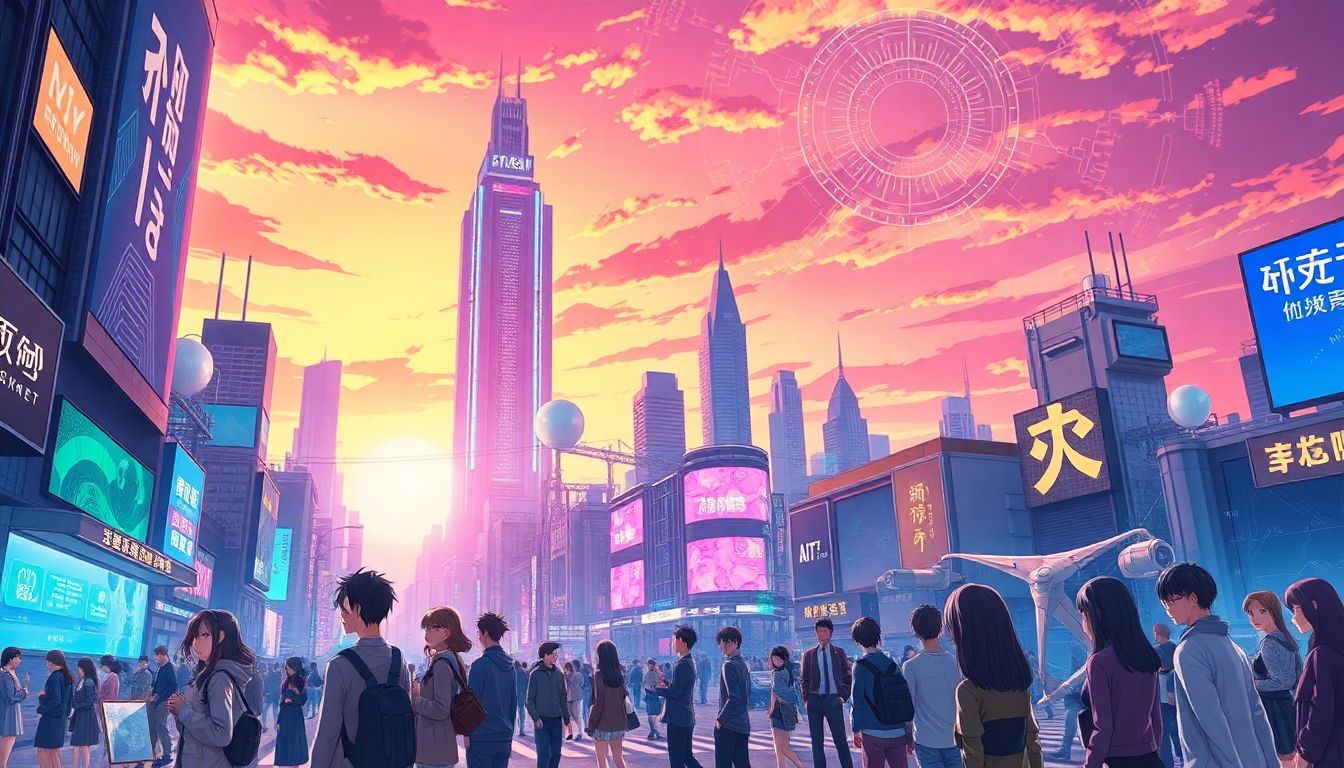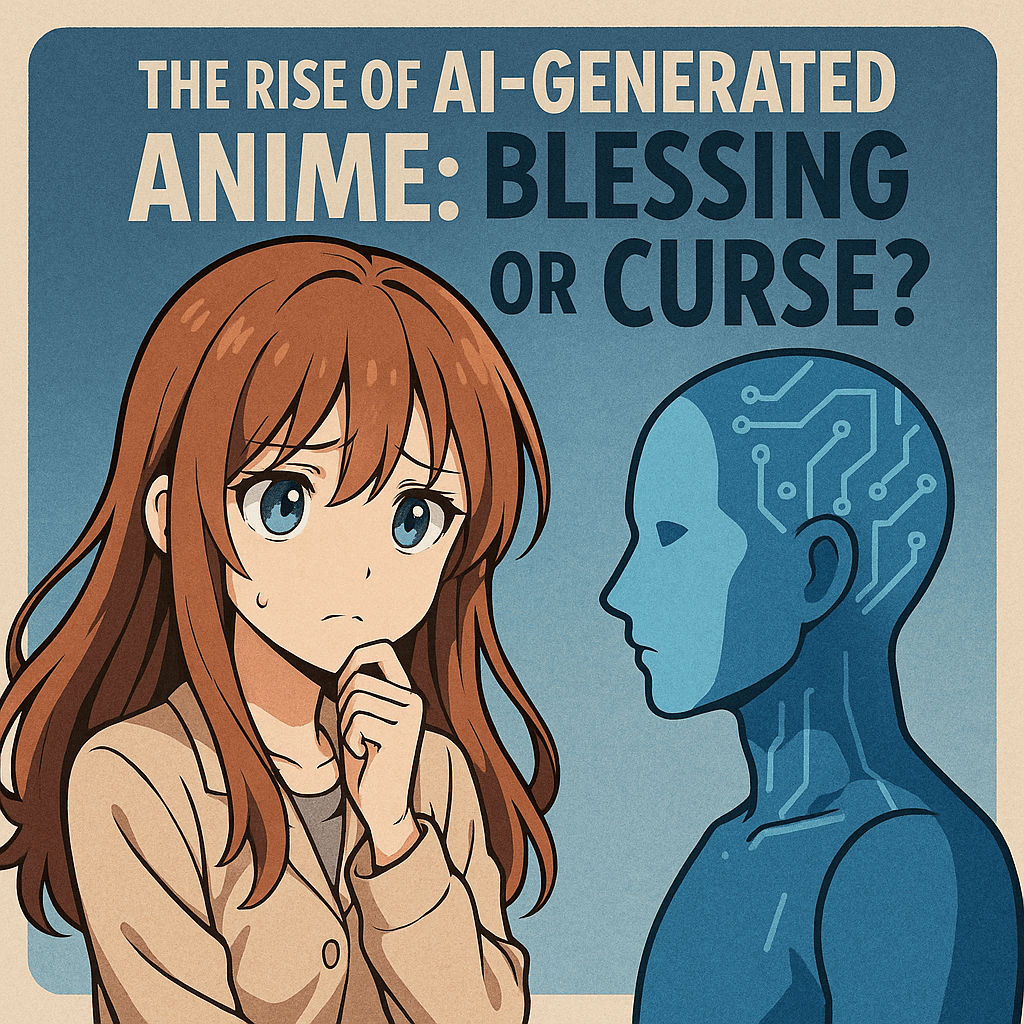Introduction
Artificial Intelligence has been changing many creative fields. Now, it's making a loud splash in anime production. You've probably seen AI art becoming more popular, but the question is: Is AI a real help or a threat? As AI tools grow smarter, they’re shaping how anime is made, watched, and understood.
Understanding these changes is vital for artists, fans, and industry leaders alike. It helps us see the bright side and beware of the gaps in this new wave of technology.
The Evolution of AI in Anime Production
The Emergence of AI Technologies in Animation
Long before AI took on the big stage, computers helped artists create digital art and animations. Over the years, new AI tools started to appear, making it easier and faster to design characters and scenes.
The big leap came when deep learning and neural networks were used to mimic human creativity. This breakthrough allowed AI to generate images and animations that looked quite realistic, pushing the boundaries of what machines can do.
Current AI Tools and Their Capabilities
Today, many platforms help artists and studios with AI. For example, tools like Runway ML make it simple to generate backgrounds or characters. Artbreeder allows users to mix and match designs to find new styles.
AI isn’t just a helper; it now assists with voice synthesis, creating voices that sound remarkably human. This reduces the need for extensive voice acting, speeding up production.
The Role of Machine Learning in Content Creation
AI learns from vast datasets of anime styles and characters. This data helps AI produce art similar to popular anime or even create entirely new styles.
For instance, AI models are trained on animations, manga panels, and voice recordings, enabling the software to generate content that fits specific anime aesthetics.
Benefits of AI-Generated Anime
Increased Production Efficiency
Studios can now make anime faster than ever. AI speeds up tasks like drawing backgrounds or coloring scenes, cutting costs at the same time.
Some projects have used AI to finish episodes in days instead of weeks. This new pace can lead to more shows being produced without sacrificing quality.
Expansion of Artistic Possibilities
AI opens the door to new styles artists might not have thought of alone. It encourages experimentation with visuals, colors, and storytelling.
Case studies show collaborations between creators and AI resulting in fresh, innovative anime scenes and characters that stand out.
Accessibility and Democratization of Content Creation
Small studios and independent creators now have tools to produce anime-style works without big budgets.
Some indie projects showcase AI tools to craft entire short films, making it easier for anyone to bring their ideas to life.
Market Growth and Audience Engagement
As AI-generated content becomes more common, more viewers are eager to watch.
This could mean new revenue streams, through unique AI-created episodes or community-driven projects. Interest in AI anime keeps rising, boosting overall consumption.
Challenges and Concerns Surrounding AI-Generated Anime
Intellectual Property and Copyright Issues
Legal rules for AI-created works are still fuzzy. Who owns an AI-generated character or scene?
There have been cases where AI copied styles too closely, raising concerns about originality and ownership rights.
Ethical Considerations and Artist Displacement
Many professionals worry AI might replace human artists and voice actors.
If AI can do the same work cheaper and faster, what happens to the people who make anime special? This raises questions about fairness and job security.
Quality and Authenticity of AI-Generated Content
AI can produce beautiful images, but can it create true emotion or storytelling?
Some fans and critics say AI-created anime lack depth, emotion, and the human touch that makes classics memorable.
Cultural and Artistic Preservation
Japanese anime is full of cultural nuances. Will AI keep these cultural details intact or produce bland, homogenized works?
Experts warn about losing the unique flavor that makes anime special globally if AI isn’t carefully guided.
Industry Responses and Future Outlook
Regulatory and Policy Developments
Governments and industry groups are starting to draft rules for AI use in media.
Some aim to protect artists’ rights, while others focus on setting fair standards for AI-generated content.
Adoption Trends and Market Predictions
Data suggests AI will play a bigger role in anime production soon.
industry insiders predict more studios will try AI tools, balancing automation with human artistry.
Analysts forecast significant growth in AI-powered anime content over the next decade.
Balancing AI Innovation with Artistic Human Touch
The key is blending AI’s speed with the soul of human imagination.
Creators should use AI as a tool, not a replacement. Crafting ethical guidelines and staying true to artistic values helps protect the industry’s integrity.
Conclusion
AI is transforming how anime is made, opening new doors for creativity and efficiency. Still, challenges remain, especially around ethics, originality, and cultural preservation.
The future of AI-generated anime depends on how well we balance these powerful tools with the human touch. It’s not just about faster production — it’s about keeping the heart and soul of anime alive.
As technology advances, we must ask ourselves: Is AI a blessing that enhances art, or a curse that endangers its soul? The answer is up to us to decide.



Comments ()